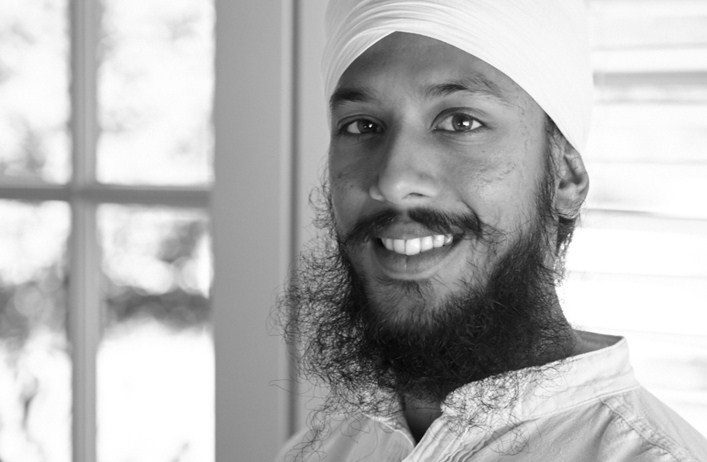No products in the cart.
by Nikhil Ramburn and Sat Bir Singh Khalsa, Ph.D

Between 1960 and 1994, the population of those 85 years and older in the United States grew 274 percent and this fact, coupled with increased longevity, is significant since the elderly spend three times more on healthcare than their working counterparts. Therefore, it is important to understand better the pathophysiology of aging and possible therapies to slow its negative effects. The normal aging process results in several physiological changes. For example, there is alteration of pulmonary mechanics, respiratory muscle strength, gas exchange, and ventilatory control, which are the collective outcome of degradation to anatomical structures such as the bronchioles, alveoli, and intercostal muscles. The renal system is similarly affected by aging since the loss of the kidneys’ cortical tissue directly affects the filtration rate, which results in fluid and electrolyte abnormalities and eventual renal insufficiency. While specific pathological features have not been identified for gastrointestinal tract senescence, changes in neuromuscular function, changes in the structure of the gastrointestinal tract itself, and changes in the absorptive and secretory functions all alter normal gastrointestinal processes. Likewise, the size of the liver decreases after the age of 50, leading to decreases in protein synthesis, such as clotting factors. Common endocrine changes include menopause in women and a slow decline of testosterone in men. T-lymphocyte-mediated immunity is also impaired and the elderly are more susceptible to infections and communicable diseases. As far as neural changes, the elderly lose 6 percent to 11 percent of their brain cortex, which can lead to a decline in cognitive functioning and may also facilitate neurodegenerative processes such as Alzheimer’s, Parkinson’s, and Huntington’s diseases.
As to the underlying mechanisms and contributors, genetics are estimated to explain only 35 percent of lifespan and the physical and cognitive declines of old age. Aging is in fact a multifactorial process that which includes lifestyle factors such as diet and stress. It is interesting that the only kind of diet so far associated with longevity is a plant-based diet as seen in epidemiological studies in Okinawa, Japan and Loma Linda in California amongst other so-called “blue zones” of long-lived populations. Social, family, and community support has also been a significant factor in determining health and mortality. Managing stress, maintaining a healthy weight, and regular physical activity can all promote longevity. Yoga may provide many of the benefits of exercise such as maintaining cardiovascular and respiratory function but can also lengthen telomeres, which are the ends of the chromosomes important for genomic integrity that are known to deteriorate with chronic stress and aging that are, therefore, genetic markers of cellular health and aging. Both healthy behaviors and mind-body interventions positively influence telomere integrity.
Given that mind-body practices, such as yoga, have positive influences on stress, resilience, and health-related behaviors, there is good evidence that yoga has a positive influence on aging. For example, certain meditative forms of yoga, such as Kundalini Yoga (Kirtan Kriya meditation specifically), have been found to increase cerebral blood flow in areas of the prefrontal cortex associated with attention and has been shown to enhance memory through increased connectivity in the default mode network (DMN) of the brain, an area commonly involved in neurodegenerative disorders. Yoga breathing practices (pranayama) may also contribute to longevity by reducing stress through increasing activity of the parasympathetic nervous system (PNS) and down-regulating the hypothalamic–pituitary–adrenal (HPA) axis. Indeed, yogic breathing stimulates the afferent vagus nerves, which are the primary peripheral pathway of the PNS.
Yoga research has shown improvements in physical functioning in the elderly. In a recent meta-analysis, Australian and Swedish researchers reviewed six trials of relatively high methodological quality, totaling 307 participants, and found that yoga-based exercises resulted in small improvements in balance and medium improvements in physical mobility in people aged 60+ years old. Therefore, yoga may counteract immobility and fractures from falls which are both associated with senescence. A 2017 study at the Picardie Jules Verne University in France also found improvements in physical functioning, specifically proprioception. With aging, gait initiation is impacted due to functional degradation, but the researchers found that a group of elderly yoga practitioners had more lower leg muscle activation and a more stable gait initiation pattern when compared with a physically active group of elderly walkers. Lastly, a 32-week study from the University of Southern California (USC) compared twenty older adults averaging 70 years old who attended 60-minute Hatha yoga classes. The program incorporated physical postures as well as pranayama, and the results revealed significant improvements in physical function and lower-extremity strength, which correspond to the biomechanical improvements noted previously.
In addition, numerous cognitive benefits were found in the elderly who yoga practice. In a 2005 study conducted at the Psychiatric Neuroimaging Research Program of the Massachusetts General Hospital, researchers used magnetic resonance imaging to assess cortical thickness in 20 participants with extensive meditation experience. The participants were not monks, rather typical western meditation practitioners. While some were meditation teachers, others pursued traditional careers in fields such as law and healthcare. The researchers found that meditation may be associated with structural changes in areas of the brain that are important for sensory, cognitive, and emotional processing. These findings are significant, because they suggest that meditation may impact age-related declines in cortical structure. A subsequent study from the Israelita Albert Einstein Hospital in São Paulo, Brazil was the first study to examine the brain cortical thickness (CT) in elderly female yoga practitioners relative to controls. Twenty-one female elderly hatha yoga practitioners were recruited from the local yoga studios, and their brain CT was compared to 21 yoga-naive women of the same age, and physical activity. The study found significantly greater CT in the left prefrontal lobe in the women who had trained in yoga for a minimum of 8 years. These findings, once again, suggest that yoga practice may have a positive impact on mental health among the elderly through its neuroprotective effects.
Researchers have also investigated the impact of long-term yoga or meditation practice on fluid intelligence, a cognitive function involving the ability to solve new problems, use logic in new ways, and identify patterns. This capacity tends to peak early in life and decline as we enter old age. With the rapidly shifting technological landscape, the capacity to maintain fluid intelligence into old age will be critical in order to remain relevant and adaptive. In this study, fluid intelligence declined slower in long-term yoga practitioners and meditators relative to controls. The functional neural networks of yoga practitioners and meditators were also more resilient to damage compared to those of control subjects that did not practice. Furthermore, a study from the University of Illinois found that eight weeks of regular yoga practice resulted in improved working memory performance in sedentary older adults when compared to a stretching control group, thereby indicating that the mindfulness component of yoga is critical in its efficacy. These improvements were mediated by a decreased stress response as measured by salivary cortisol measurements (a biomarker of stress) and suggest that yoga may restore the balance in the stress-regulating systems in older adults, thereby preventing cognitive decline.
Studies in the field of molecular biology have shown that there are quantifiable changes with aging, specifically in genomic expression, in which changes in the activity of specific genes can be quantified as well as changes in the integrity of genes and telomeres. Since yoga can decrease oxidative damage to DNA and reduce cellular aging, researchers from the All India Institute of Medical Sciences (AIIMS), the premier medical research and clinical institution in India set out to determine whether yoga can impact telomere stability. Their 2018 review of the literature revealed that yoga may have a protective effect on telomere length and the telomerase enzyme responsible for maintaining the telomeres. Indeed, yoga may upregulate enzymes that degrade reactive oxygen species (ROS), thereby preventing oxidative damage to telomeric DNA sequences, which may explain these findings. In another study, AIIMS researchers set out to explore cellular aging through a prospective single-arm study. After just 12 weeks of a yoga and meditation-based lifestyle intervention, 96 healthy individuals had significant improvements in biomarkers of cellular aging compared to baseline values. ROS and cortisol were significantly lower and telomerase activity significantly increased, suggesting a reduced rate of cellular aging in yoga practitioners.
In summary, these encouraging findings suggest that yoga may be a viable strategy to slow down the aging process and maintain both physical and cognitive health into old age. Future trials with larger cohorts and long-term follow-ups will help us better understand the mechanisms underlying the beneficial biochemical changes induced by yoga practices.

Nikhil Rayburn grew up practicing yoga under mango trees in the tropics. He is a certified Kundalini Yoga teacher and has taught yoga to children and adults in Vermont, New Mexico, Connecticut, India, France, and Mauritius. He is a regular contributor to the Kundalini Research Institute newsletter and explores current yoga research.

Sat Bir Singh Khalsa, Ph.D. is the KRI Director of Research, Research Director for the Kripalu Center for Yoga & Health, and Assistant Professor of Medicine at Harvard Medical School. He has practiced a Kundalini Yoga lifestyle since 1973 and is a KRI certified Kundalini Yoga instructor. He has conducted research on yoga for insomnia, stress, anxiety disorders, and yoga in public schools. He is editor in chief of the International Journal of Yoga Therapy and The Principles and Practice of Yoga in Health Care and author of the Harvard Medical School ebook Your Brain on Yoga.
Teacher
KRI is a non-profit organization that holds the teachings of Yogi Bhajan and provides accessible and relevant resources to teachers and students of Kundalini Yoga.


 Français
Français Deutsch
Deutsch Italiano
Italiano Português
Português Español
Español 简体中文
简体中文
More Related Blogs